.
29.05.2014 / 10.30 MESZ
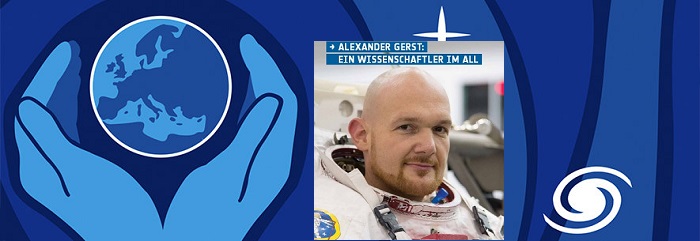
.
ESA-ASTRONAUT ALEXANDER GERST IST AUF DER ISS ANGEKOMMEN
.
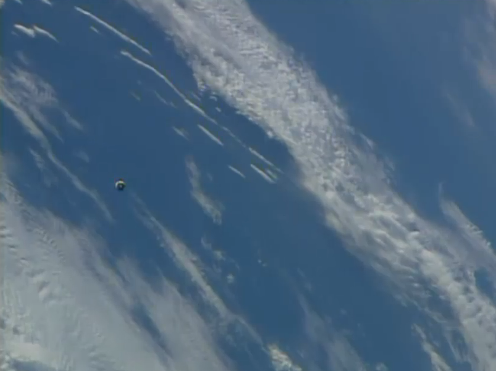
First sighting of Soyuz
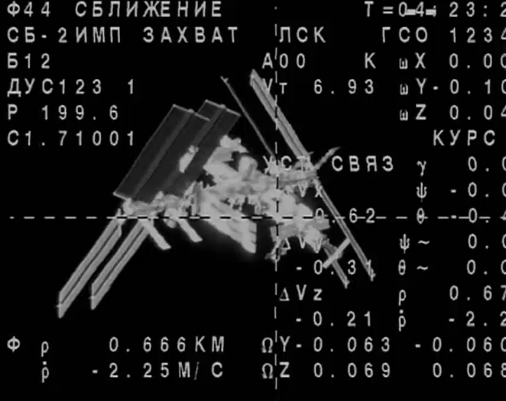
The International Space Station seen from Soyuz
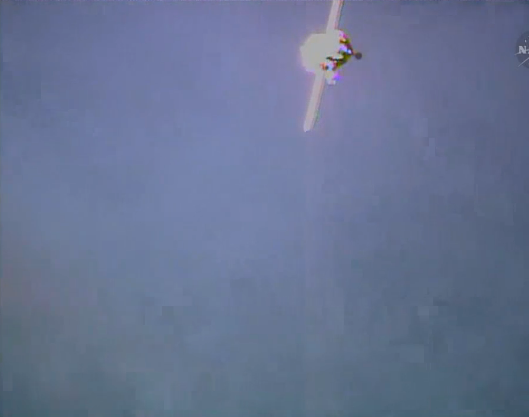
Getting closer
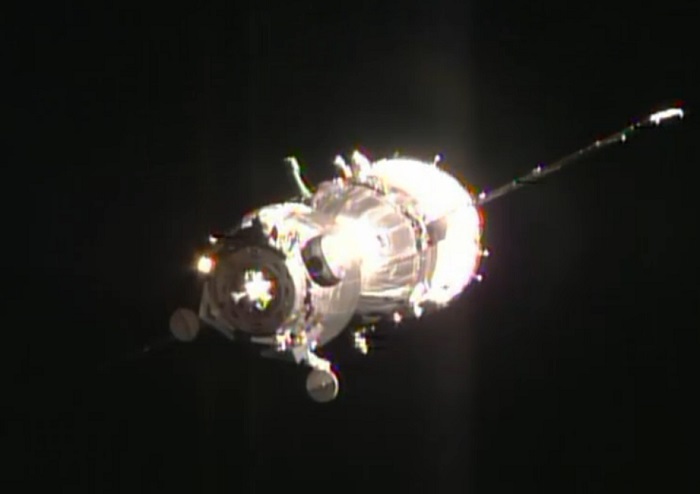
At 100 metres
.
Eine vergangene Nacht vom Kosmodrom Baikonur in Kasachstan aus gestartete Sojus hat in den frühen Morgenstunden an der Internationalen Raumstation (ISS) angedockt. An Bord waren ESA-Astronaut Alexander Gerst und seine Kollegen der „Expedition“-Mannschaften 40 und 41, der russische Kosmonaut Maxim Surajew und NASA-Astronaut Gregory Reid Wiseman.
Einmal mehr wurde damit der internationale Wert der Zusammenarbeit in der Raumfahrt demonstriert. Die drei werden nun sechs Monate lang im Weltraum leben und arbeiten. Gerst ist der dritte Deutsche an Bord der ISS und der sechste ESA-Astronaut auf einer Langzeitmission auf der Station.
Die Sojus TMA 09M hob am 28. Mai um 21.57 Uhr MESZ von Baikonur ab und erreichte neun Minuten später den Orbit. Nach vier Umrundungen der Erde erreichte das Raumfahrzeug die ISS und war bereit zum Andocken am Rasswet-Modul.
Das Andockmanöver erfolgte planmäßig um 3.44 Uhr MESZ, und um 5.52 Uhr wurde die Luke geöffnet. Die drei Neuankömmlinge wurden von den Kosmonauten Alexander Skworzow und Oleg Artemjew und NASA-Astronaut Steven Swanson begrüßt, die als Mitglieder der „Expedition“-Mannschaften 39 und 40 einen Teil der Mission gemeinsam mit ihnen durchführen werden.
.
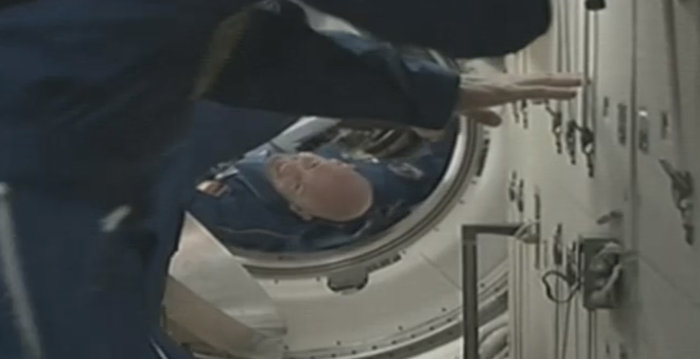
Während der ersten Woche auf der Station werden sich Gerst und seine Mannschaftskollegen mit ihrem neuen Zuhause vertraut machen, bevor ein volles Programm an Forschungs- und technischen Tätigkeiten beginnt. Gersts 166-Tage-Mission wurde „Blue Dot“ getauft. Der Name geht auf die Beschreibung der fernen Erde als „blassen blauen Punkt“ durch den amerikanischen Astronomen Carl Sagan zurück, als dieser eine Bildaufnahme der NASA-Sonde Voyager aus sechs Milliarden Kilometern Entfernung von der Erde kommentierte.
Die Mission sieht ein umfassendes wissenschaftliches Programm vor, das die Vielseitigkeit der auf der Station durchgeführten Forschung widerspiegelt. Gemäß der Politik der ESA, den praktischen Nutzen der Forschung im Weltraum zu maximieren, sind mehr als 40 Experimente von wissenschaftlicher Bedeutung oder zur Vorbereitung künftiger Explorationsmissionen vorgesehen.
Die Experimente werden sich auf Bereiche wie Werkstoffkunde, Humanphysiologie, Strahlungsforschung, Solarforschung, Biotechnologie, Fluidphysik und Astrophysik erstrecken. Hinzu kommt eine Reihe von Technologiedemonstrationen. Ein Höhepunkt der Mission „Blue Dot“ ist der elektromagnetische Levitator, ein Schmelzofen, mit dem industrielle Gießverfahren verbessert und das feinere Gießen filigraner Metallteile ermöglicht werden sollen. In der Schwebe ermöglichen Metallschmelzen weit genauere Messungen der Eigenschaften der Metalle als auf der Erde, wo die Proben häufig von ihrem Behälter verunreinigt werden.
Sämtliche wissenschaftliche Experimente an Bord der ISS dienen der Erweiterung der Grenzen unseres Wissens und haben unmittelbare Auswirkungen auf die Innovation auf der Erde.Als Flugingenieur wird Gerst auch am Andockmanöver des 5. und letzten Automatischen Transferfahrzeugs (ATV) der ESA, „Georges Lemaître“, mitwirken, dessen Start für den 25. Juli vorgesehen ist. Die ATV sind die größten Raumfahrzeuge zur Versorgung der ISS. Sie befördern Fracht zur Station, führen regelmäßig Manöver zur Anhebung der Flugbahn der ISS durch und können bei Bedarf den 420 Tonnen-Komplex aus der Flugbahn von gefährlichem Weltraummüll entfernen.
Das ATV 5 wird den neuen Laser-Infrarotbildsensor LIRIS testen, der es künftigen Raumfahrzeugen ermöglichen soll, an Zielen wie Raumkapseln oder Weltraummüll anzudocken. Außerdem wird Gerst aktiv an den Andockmanövern anderer Versorgungsfahrzeuge beteiligt sein, die während seiner Mission auf der Station erwartet werden. Zu den weiteren Höhepunkten gehört ein geplanter Außenbordeinsatz. Wie bereits andere ESA-Astronauten vor ihm, wird auch Gerst ein Bildungsprogramm durchführen, mit dem das Interesse von Kindern für die Raumfahrt gefördert werden soll.
Quelle: ESA
.
Update: 11.00 MESZ
.
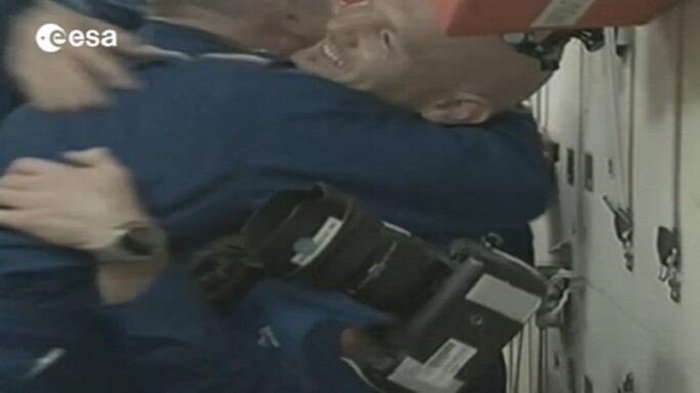
After a long wait the hatch seperating the Soyuz spacecraft crew Alexander, Reid and Maxim was opened at 5:52 CEST. The crew were welcomed aboard the International Space Station by Steve Swanson, Oleg Artemyev and Alexander Skvortsov. They immediatly had a call home with family and friends.
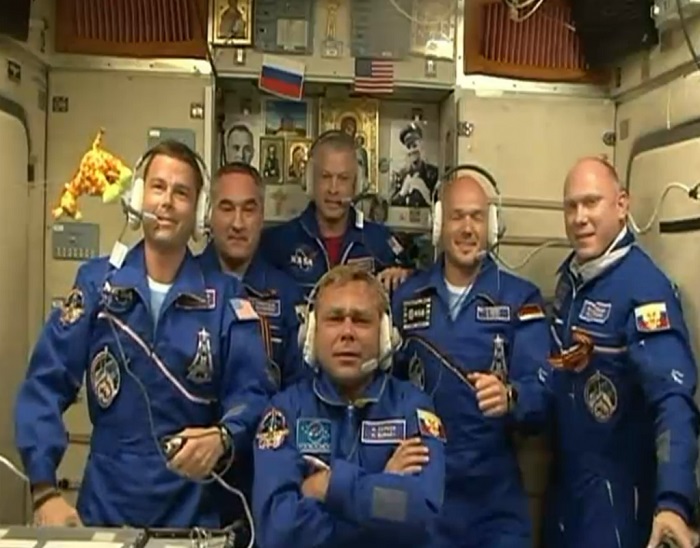
Quelle: ESA
.
Update: 11.30 MESZ
.
Alexander Gerst: Ankunft auf der ISS
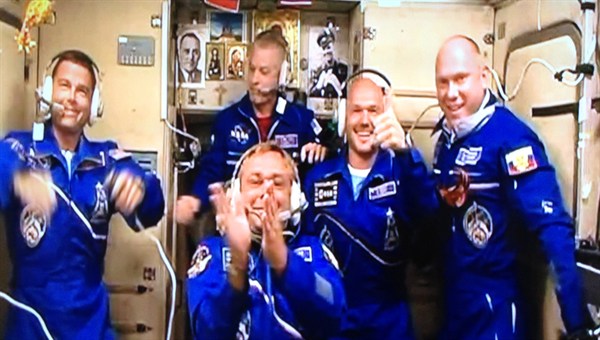
Der deutsche ESA-Astronaut Alexander Gerst und seine Teamkollegen, der russische Kosmonaut Maxim Suraev und der amerikanische Astronaut Reid Wiseman sind auf der Internationalen Raumstation ISS eingetroffen. Die Crew startete 28. Mai 2014 um 21.57 Uhr mitteleuropäischer Zeit (1.57 Uhr Ortszeit) vom Weltraumbahnhof Baikonur ins All. Ihr Flug vom Startplatz in Kasachstan bis zur ISS dauerte sechs Stunden, noch in der Nacht, um 3.44 Uhr mitteleuropäischer Zeit, dockte die Sojus-Kapsel mit der Crew an die Raumstation. Um 5.52 Uhr MESZ öffnete sich die Verbindungstür zur ISS - Alexander Gersts Mission „Blue Dot“ hat begonnen.
"Mit dem Flug von Alexander Gerst wird das deutsche Engagement in der bemannten Raumfahrt konsequent fortgesetzt. In den letzten Jahrzehnten, beginnend mit den Flügen von Sigmund Jähn und Ulf Merbold, haben deutsche Ingenieure und Wissenschaftler mit dazu beigetragen, dass sich der Mensch im Erdorbit etablieren konnte", sagt Prof. Johann-Dietrich Wörner, Vorstandsvorsitzender des DLR."Wieder zeigt die Raumfahrt, was möglich ist, wenn über alle Grenzen hinaus international kooperiert wird, um ein gemeinsames Ziel zu verfolgen und dieses auch gemeinsam zu erreichen."
Alexander Gerst hat es einmal grob überschlagen: Rund 6000 Stunden hat er für seine Mission weltweit trainiert und sich in Houston, Moskau, Tokio und Köln auf das Leben und Arbeiten in der ISS vorbereitet. Mit dem Start vom kasachischen Weltraumbahnhof Baikonur hat das Training ein Ende, und Gerst muss seine erworbenen Kenntnisse in seinen sechs Monaten im Weltall anwenden. Während seiner Zeit im All wird Alexander Gerst rund 100 Experimente durchführen. 25 dieser Experimente finden unter Führung deutscher Projektwissenschaftler oder mit deutscher Industriebeteiligung statt. Dazu gehören Experimente des Deutschen Zentrums für Luft- und Raumfahrtforschung (DLR) wie DOSIS-3D zur Charakterisierung der Weltraumstrahlung oder materialwissenschaftliche Experimente im Elektromagnetischen Levitator EML, aber auch Experimente von Forschungseinrichtungen wie der Charité Berlin, der Deutschen Sporthochschule oder dem Fraunhofer Institut für Physikalische Messtechnik sowie von Unternehmen wie Airbus werden auf dem täglichen Stundenplan des 38-jährigen Astronauten stehen.
Aufgaben an Bord
Neben seiner Arbeit als "verlängerter Arm" der Wissenschaftler auf der Erde, wird Gerst in dem sechsköpfigen Team in der ISS als Bordingenieur für Wartungs- und Reparaturarbeiten in und an der Raumstation eingesetzt. Er unterstützt die Crew aber auch als "Medical Officer" bei gesundheitlichen Problemen und steht dann mit dem Ärzteteam am Boden in Kontakt. Dafür erhielt er eine medizinische Ausbildung, so dass er Wunden nähen oder auch Zahnfüllungen ersetzen kann. Auch bei der Ankunft verschiedener Transportraumschiffe ist der deutsche Astronaut im Einsatz: So wird im Juni der Transporter Cygnus des Unternehmens Orbital Sciences an der ISS andocken. Im Juli und September wird das Unternehmen SpaceX jeweils einen Dragon-Transporter mit Fracht an Bord zur Raumstation schicken. Gerst hat dafür das Greifen und Einfangen mit dem an der Außenseite angebrachten Roboterarm trainiert. Im Juli wird zudem der europäische Raumtransporter ATV (Automated Transfer Vehicle) "Georges Lemaître" automatisch an der ISS andocken - der deutsche Astronaut wird diesen Vorgang überwachen und im Notfall eingreifen. Vorgesehen sind auch Ausstiege aus der ISS, bei denen die Astronauten im mehrstündigen Einsatz Reparaturen und Installationen an der Außenseite der Raumstation durchführen.
Arbeitstage im Minutentakt
Sechs Arbeitstage in der Woche sind so für ihn im Minutentakt geplant. Dazu kommen noch ein sportliches Pflichtprogramm, freiwilliges Experimentieren in seiner Freizeit, Videokonferenzen und Telefongespräche mit den Kontrollzentren, Familienmitgliedern und Freunden - und auch der Hausputz in der Raumstation. 166 Tage wird Alexander Gerst im All verbringen, bevor er am 10. November 2014 wieder in einer Sojus-Kapsel zur Erde zurückkehren wird.
Quelle: DLR
.
Update: 14.00 MESZ
Woran forscht Alexander Gerst auf der Internationalen Raumstation ISS?
Wie können Turbinenschaufeln noch leichter und gleichzeitig stabiler werden? Kann ein elektrischer Leiter ein Magnetfeld aufbauen, das Raumschiffe vor dem Sonnenwind schützt? Was können wir aus den physiologischen Veränderungen, die die Astronauten im Weltraum erfahren, für den Menschen auf der Erde lernen? Diesen und weiteren spannenden Fragen will der deutsche ESA-Astronaut Alexander Gerst an Bord der Internationalen Raumstation ISS während seiner Mission "Blue Dot" auf den Grund gehen. Unter dem Motto "Shaping the future - Zukunft gestalten" wird der 38 Jahre alte Geophysiker zwischen seinem Start am 28. Mai und seiner Landung am 11. November 2014 circa 100 Experimente durchführen. 35 Experimente kommen aus Europa - die meisten davon aus deutschen Forschungseinrichtungen wie dem Deutschen Zentrum für Luft- und Raumfahrt (DLR).
Weltraum erprobte Werkstoffe
Leichte und stabile Werkstoffe sind wichtig für die Industrie. Auf der Erde sinken schwere Teile in einer Schmelze nach unten in Richtung Erdmittelpunkt. Da in der Umlaufbahn der ISS Schwerelosigkeit herrscht, verteilen sich die Legierungsbestandteile einheitlich in der Schmelze. Je einheitlicher die Verteilung, desto stabiler und hochwertiger ist der Werkstoff. Bislang werden auf der ISS schon Gussteile in den beiden Öfen des Material Science Lab (MSL) geschmolzen. Um diese Forschung weiter auszubauen, soll Alexander Gerst einen neuen, einzigartigen Hightech-Schmelzofen, den Elektromagnetischen Levitator (EML), auf der ISS installieren, in Betrieb nehmen und bis zu sechs Proben schmelzen. In dem Kooperationsprojekt EML von DLR und ESA schweben die Proben frei im Raum und werden durch ein elektromagnetisches Feld in Position gehalten. Mit dem Ofen wollen viele Forscher - unter anderem Wissenschaftler des DLR-Instituts für Materialphysik im Weltraum, deutscher Universitäten, des Forschungsinstituts ACCESS in Aachen und der Metallindustrie - neuartige Legierungen testen.
Emulsionen und Plasmen in Schwerelosigkeit
Alexander Gerst will auch untersuchen, wie sich Emulsionen in Schwerelosigkeit verhalten und wie man diese Mixturen stabiler machen kann. Emulsionen spielen zum Beispiel in der Lebensmittelproduktion, der kosmetischen und pharmazeutischen Industrie, aber auch in der Ölindustrie eine wichtige Rolle. Viele dieser speziellen Mischungen müssen in Lebensmitteln, Kosmetika und pharmazeutischen Produkten lange Zeit hochstabil bleiben. Im Experiment PASTA werden die Eigenschaften von Emulsionen in der FASES- und in der brandneuen FASTER-Anlage untersucht. Im DCMIX-Experiment der Universität Bayreuth untersucht Alexander Gerst Diffusionsprozesse in Fluiden, die wenigstens drei Komponenten enthalten. Das Experiment soll auch dabei helfen, Mischungsunterschiede von Erdöl in Lagerstätten besser zu verstehen.
Auch die Plasmaforschung wird während der Blue Dot-Mission einen gewaltigen Schritt in die Zukunft machen. Alexander Gerst soll die PK-4-Anlage in Empfang nehmen und im europäischen Columbus-Labor installieren - ein weiteres Highlight seiner Mission. Mit dem Nachfolger der deutschen Anlagen PK-3 und PK-3-Plus sollen physikalische Grundlagen komplexer, dreidimensionaler Plasmen erforscht werden. Diese Plasmen bestehen aus einem kalten elektrisch leitendenden Gas, das mit Staubpartikeln angereichert ist. Da die Partikel absinken und das komplexe Plasma in Richtung der Schwerkraft stauchen, ist ein Plasmakristall auf der Erde auf nur wenige Gitterebenen begrenzt. Nur unter Schwerelosigkeit können große, homogene 3D-Strukturen ungestört gebildet und erforscht werden. Auf der Erde hilft diese Forschung, Staubbildung beim Herstellungsprozess von Mikrochips zu kontrollieren. An den ISS-Experimenten sind neben der neugegründeten "Forschergruppe Komplexe Plasmen" im DLR in Oberpfaffenhofen, Wissenschaftler des Joint Institute for High Temperatures (JIHT) in Moskau und der Universität Gießen beteiligt.
Ein Stück "Raumschiff Enterprise"
Unsere Erde ist dem permanenten Beschuss durch hochenergetische Teilchen - dem sogenannten Sonnenwind - ausgesetzt. Zum Glück schützt uns das Erdmagnetfeld vor diesem "Dauerfeuer" der Sonne. Unser Nachbarplanet Venus hat keinen solchen natürlichen Schutzschirm. Dort trifft das solare Magnetfeld ungehindert auf die Ionosphäre der Venus, die als eine Art "elektrischer Leiter" mit dem Magnetfeld der Sonne eine Wechselwirkung erzeugt. Solche Bedingungen untersucht das MagVector/MFX-Experiment des DLR Raumfahrtmanagements. Die ISS liefert für diese Messungen ideale Bedingungen: Mit einer Orbitalgeschwindigkeit von rund 7,5 Kilometern pro Sekunde durchfliegt die Raumstation ständig das Erdmagnetfeld und liefert so permanent eine Laborumgebung im Planetenmaßstab für MFX. Aufwendige Spezialverkleidungen für Raumfahrzeuge könnten dann der Vergangenheit angehören.
Alterung im Zeitraffer
In der Schwerelosigkeit läuft im Zeitraffer das Gleiche ab, was Menschen beim Alterungsprozess auf der Erde erleben: Muskelabbau, Osteoporose, Rückenbeschwerden, Kreislauf- und Orientierungsprobleme, zunehmende Kraftlosigkeit sowie Probleme im Immunsystem. Daher können in der Raumfahrtmedizin an gesunden Astronauten Krankheiten und Alterungsphänomene studiert werden. Alexander Gerst ist auch ein Proband für die medizinische und biologische Forschung: Veränderungen des Knorpels im Kniegelenk (Cartilage), der Tagesrhythmik der Köperkerntemperatur (Circadian Rhythm) sowie der Eigenschaften der Haut (Skin-B) sind drei der deutschen Experimente, die vor der Mission "Blue Dot" begonnen haben und die Alexander Gerst erfolgreich weiterführen soll.
Dem Ursprung des Lebens auf der Spur
In der Astrobiologie erforschen Wissenschaftler unter anderem diese Fragen nach dem Ursprung des Menschen, der Verteilung und der Entwicklung von Leben sowie nach Lebensmöglichkeiten außerhalb der Erde. Mit den beiden Experimenten BOSS und BIOMEX will Alexander Gerst dazu beitragen, Antworten auf diese Fragen zu finden. Unter anderem werden Mikroorganismen in der Anlage Expose-R an der Außenseite der ISS den harten Bedingungen des Weltraums wie Strahlung und Vakuum ausgesetzt.
Quelle: DLR
.
Das Columbus-Kontrollzentrum - Europas Link zur ISS
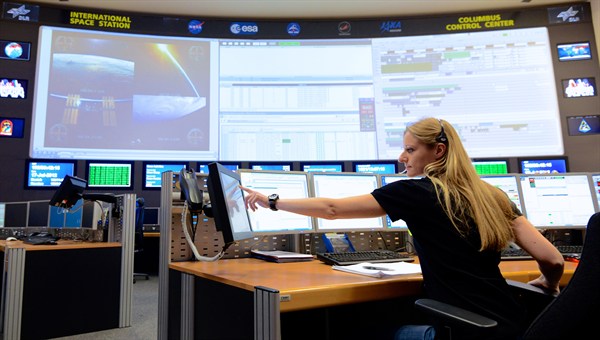
Das Columbus-Kontrollzentrum in Oberpfaffenhofen
.
Das Columbus-Kontrollzentrum befindet sich im Deutschen Raumfahrtkontrollzentrum des Deutschen Zentrums für Luft- und Raumfahrt (DLR) in Oberpfaffenhofen. Etwa 75 Wissenschaftler und Ingenieure steuern von hier die europäischen Aktivitäten auf der Internationalen Raumstation.
Zu den Aufgaben des Kontrollzentrums gehören:
- das Training für das Betriebspersonal sowie die Vorbereitung und Durchführung von Missionssimulationen,
- die Überwachung und Steuerung der technischen Systeme des Columbus-Labors und der Experimente an Bord der Raumstation,
- die Kommunikation zwischen ISS, Bodenstationen und den Nutzerkontrollzentren, Empfang, Verarbeitung, Verteilung und Auswertung von Daten,
- die Betriebsablaufplanung an Bord und am Boden (Missionsplanung).
Aufgaben während der Columbus-Mission
Nachdem das Columbus-Modul an die ISS angekoppelt wurde, übernahm das Kontrollzentrum die Verantwortung für das europäische Weltraumlabor sowie die Koordinierung des wissenschaftlichen Programms. Dabei stand das Kontrollzentrum in engem Kontakt mit den für die ISS zentral verantwortlichen Missionskontrollzentren der NASA in Houston und von Roskosmos in Moskau. Bezüglich seiner Arbeiten mit den wissenschaftlichen Nutzlasten stimmte sich das Columbus-Kontrollzentrum in Oberpfaffenhofen mit dem ISS-Nutzlast-Zentrum in Huntsville (Alabama) ab, das die übergeordnete Verantwortung für alle Versuchsanlagen auf der Raumstation trägt.
Geschichte
Der Auftrag an das DLR zum Aufbau des Columbus-Kontrollzentrums erfolgte durch die Europäische Weltraumorganisation ESA. Für diese neue Aufgabe kann das DLR auf langjährige Betriebserfahrungen und Kompetenzen bei der Durchführung von Raumflugmissionen zurückgreifen: Bei zehn bemannten und mehr als 40 unbemannten wissenschaftlichen und kommerziellen Missionen hat sich der DLR-Standort Oberpfaffenhofen, rund 25 Kilometer südwestlich von München gelegen, in den vergangenen vier Jahrzehnten einen Namen gemacht. Zu den herausragenden Missionen zählen die deutschen Spacelab-Missionen, D1 und D2, mit dem amerikanischen Space Shuttle sowie Flüge deutscher Kosmonauten zur Mir und deren Experimente auf der russischen Raumstation. Das neue Columbus-Kontrollzentrum wurde am 19. Oktober 2004 eröffnet und war erstmals beim einwöchigen Flug des italienischen ESA-Astronauten Roberto Vittori im April 2005 zur ISS an einer Mission beteiligt. Auch beim Langzeitflug des deutschen ESA-Astronauten Thomas Reiter 2006 im Rahmen der Astrolab-Mission übernahm das Columbus-Kontrollzentrum wichtige Aufgaben.
Heutige und zukünftige Aufgaben
Seit 2008 ist das Columbus-Kontrollzentrum ebenfalls an den Missionen des unbemannten europäischen Raumtransporters ATV zur ISS beteiligt. Dieser versorgt die Raumstation unter anderem mit Lebensmitteln, Wasser, Treibstoff und Sauerstoff und bringt neue wissenschaftliche Experimente an Bord der ISS. Das Columbus-Kontrollzentrum stellt hierfür die Kommunikations-Infrastruktur zwischen den Kontrollzentren in Toulouse, Houston und Moskau während des gesamten ATV-Betriebs im Orbit zur Verfügung.
Das Raumlabor Columbus ist ein europäisches Gemeinschaftsprojekt unter Führung der europäischen Weltraumorganisation ESA. Deutschland war und ist maßgeblich am Bau, dem Betrieb und der Nutzung von Columbus beteiligt. Die industrielle Führung des Projektes lag bei EADS Astrium in Bremen.
Quelle: DLR
.
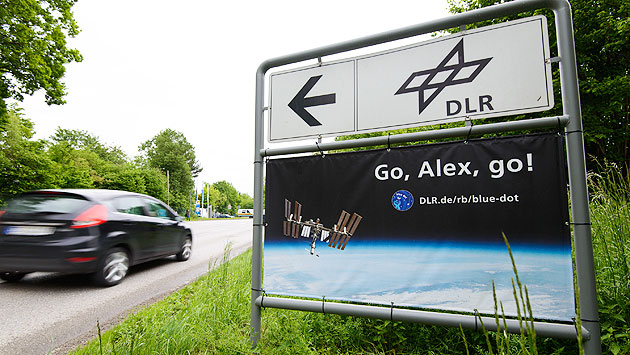
Schon von der Straße aus, die an unserem Standort vorbei führt, sieht man seit kurzem den Slogan dieser Nacht: Auf großen Bannern ist dort, neben einem Bild der ISS und dem Blue Dot-Logo zu lesen "Go, Alex, go!"
Dieses Motto spiegelt gut die Stimmung wieder, die seit einigen Tagen bei uns am Columbus-Kontrollzentrum herrscht - und die am Abend des 28. Mai kumuliert ist: Seit langem ist mal wieder ein Deutscher zur ISS unterwegs, ein "neues Gesicht" noch dazu: Alexander Gerst wird als zweiter unserer "Neuen" auf die Raumstation fliegen, jener Neuen, auf die bei uns zu Beginn jeder etwas neidisch geschaut hat - kaum jemand in unserem Team, der sich nicht auf die sechs freien Stellen für ESA-Astronauten beworben hätte...
Alex hat es geschafft - und inzwischen ist auch der Neid verflogen und wir freuen uns auf eine erfolgreiche Mission. Поехaли ("Pojechali", "los geht’s") ist der berühmte Ausspruch von Juri Gagarin, als er sich anschickte, als erster Mensch den Weltraum zu erobern - von Baikonur aus, von wo aus jetzt auch Alex und seine Kollegen Maxim Surajew und Reid Wiseman mit dem Sojus-Raumschiff 39S Richtung ISS gestartet sind.
Pünktlich um 21:57 Uhr machte sich das Raumschiff auf seinen Weg zur ISS, wo es um 03:48 Uhr erwartet wird. In den etwa sechs Stunden, die bis zum Andocken vergehen, muss die Sojus-Kapsel ihre Flugbahn immer wieder durch kurze Triebwerkszündungen so ändern, dass sie sich nach den komplizierten Regeln der Himmelsmechanik ihrem Ziel annähert.
Wir ISS-Kontrollzentren (Houston, Huntsville, Oberpfaffenhofen, Tsukuba) konnten bei dem Start im Wesentlichen nur zuschauen, denn der Flug wird von den russischen Kollegen überwacht. Lediglich die Erklärung unserer Bereitschaft für den Start der Sojus-Mission war notwendig. Für uns als Columbus-Kontrollzentrum gab Flugdirektor Torsten Gehrke das "Go": Unser Modul ist konfiguriert für die Ankunft des Sojus-Raumschiffs!
Für das Docking müssen wir dann noch einmal extra Strom sparen, denn hierfür werden die Solarpanele der ISS in eine spezielle Konfiguration gebracht, durch die sie nicht mehr die volle Leistung erzeugen können. Und die aktive Lageregelung der ISS wird auch zunächst von den Amerikanern an die Russen übergeben, dann wird die Station in die Docking-Ausrichtung gebracht und schließlich für das Andocken selber komplett für einen Moment deaktiviert: Die ISS-Computer sollen nicht "gegen" die Sojus-Computer arbeiten, wenn die beiden Raumschiffe physikalisch zusammentreffen und entsprechende Kräfte wirken.
Dann werden sich irgendwann die Luken zwischen den Raumschiffen öffnen und die beiden Besatzungen sich in die Arme fallen.
Dann geht für uns die Arbeit richtig los: Alex ist dann "Flight Engineer 6" und offiziell ISS-Crewmitglied und kann mit seiner eigentlichen Arbeit beginnen: "Go, Alex, Go!"
Quelle: DLR
.
Six-Person Station Crew Enjoys Day Off Following Docking / Frams von Soyuz hatch opening
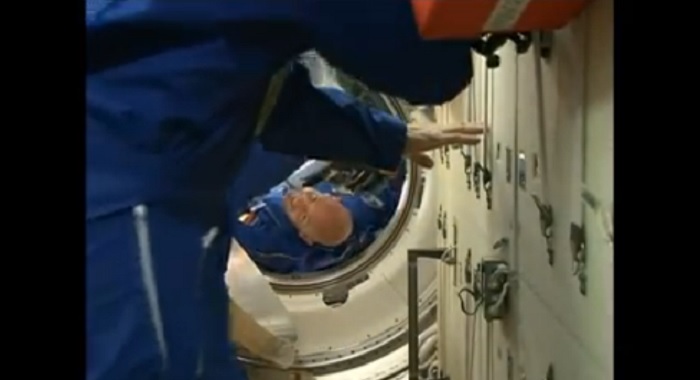
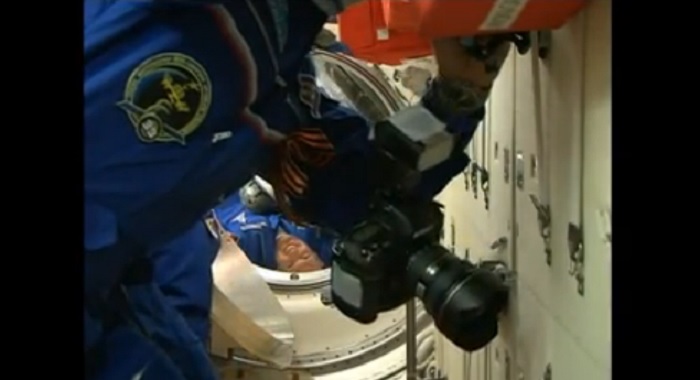
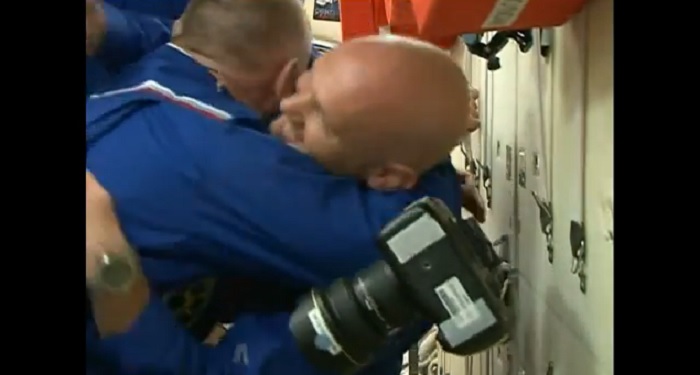
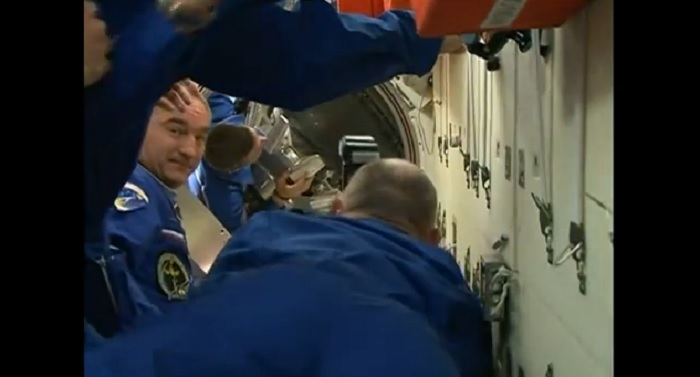
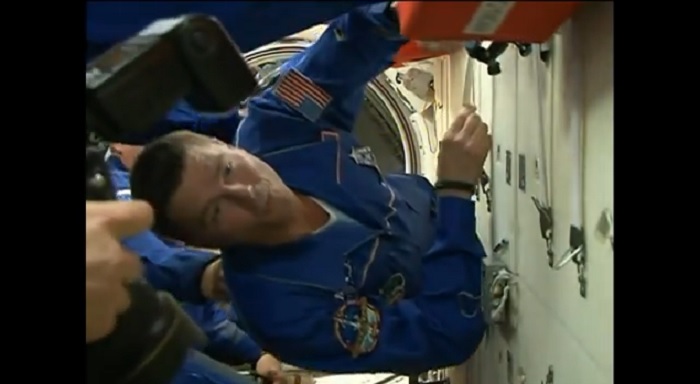
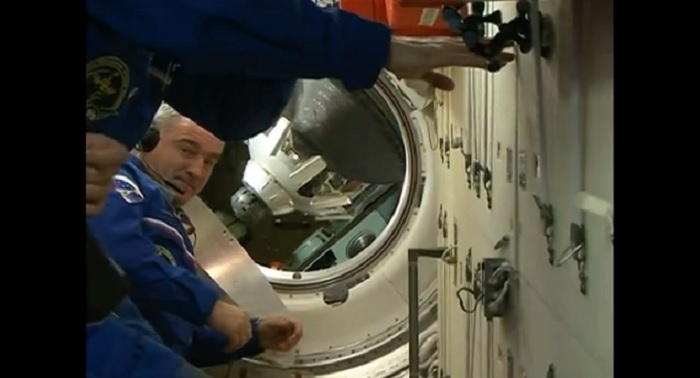
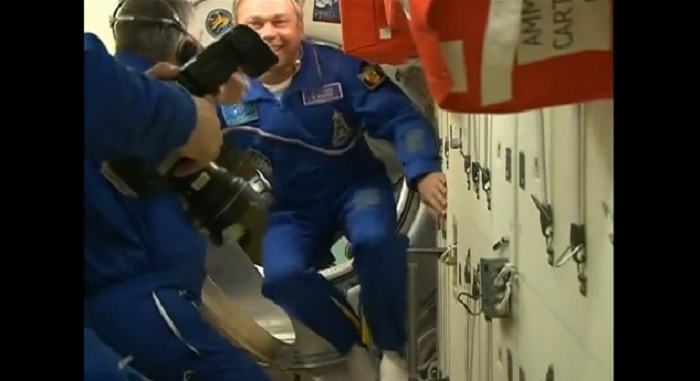
NASA astronaut Reid Wiseman, Soyuz Commander and cosmonaut Max Suraev of Roscosmos, the Russian Federal Space Agency, and European Space Agency (ESA) astronaut Alexander Gerst were welcomed aboard the station when the hatches between their Soyuz TMA-13M spacecraft and the station were opened at 11:52 p.m. EDT Wednesday.Commander Steve Swanson of NASA and Flight Engineers Oleg Artemyev and Alexander Skvortsov of Roscosmos, who have been aboard the orbiting complex since March 27, greeted the newly arrived flight engineers. Afterward, all six crew members moved into the Zvezda service module so the station’s three newest residents could receive congratulatory calls from family members and VIPs gathered at the Baikonur Cosmodrome in Kazakhstan.Wiseman, Suraev and Gerst launched from Baikonur at 3:57 p.m. (1:57 a.m. Thursday, Kazakh time) and docked to the station’s Rassvet module at 9:44 p.m. During the next two weeks they will have time set aside to become accustomed to living and working aboard the station, which is larger than a six-bedroom house.
During their six-month stay on the orbiting laboratory, Wiseman, Suraev and Gerst will conduct hundreds of scientific investigations and technology demonstrations. These include Earth remote sensing, an assessment of human behavior and performance, and studies of bone and muscle physiology.
The new crew members will perform several other experiments that cover human health and safety, biological and physical sciences, technology development, and Earth observations, as well as engage in educational activities.
In the months ahead, the Expedition 40 crew will conduct a pair of Russian spacewalks and as many as three U.S. spacewalks. They also will greet a Russian Progress spacecraft resupply flight, the fifth and final ESA Automated Transfer Vehicle, Orbital Science's second commercial resupply flight and the fourth supply delivery for SpaceX Dragon.
The Expedition 40 crew will kick off its first full workday as a six-person crew Friday at 2 a.m., the standard wakeup time for the international crew.
Quelle: NASA
.
Update: 30.05.2014
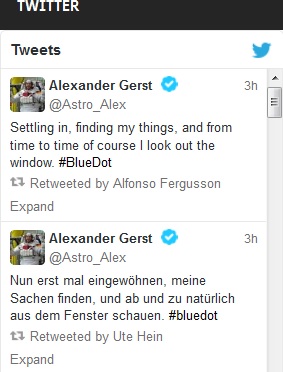
.
Update: 31.05.2014
.
Science, Orientation Fill First Full Workday for Six-Person Station Crew
.
The International Space Station’s Expedition 40 crew, restored to its full six-person crew contingent with this week’s arrival of three new flight engineers, tackled scientific research, cargo transfers and orientation activities Friday.Commander Steve Swanson, who has been on the station since March 27 along with Flight Engineers Oleg Artemyev and Alexander Skvortsov, began the workday inside the Kibo laboratory reconfiguring the Japanese Experiment Module’s scientific airlock. Swanson used the airlock and its slide table on Tuesday to pass a new camera to the exterior of the station. There the Special Purpose Dexterous Manipulator, or Dextre, was commanded by the robotic ground team to retrieve the camera and install it near the elbow joint of the Canadarm2 robotic arm. As part of an operation that began last week with the transfer of a camera into the system’s mobile base, which together with Dextre and Canadarm2 forms the Mobile Servicing System, Dextre became the first robot to repair itself in space.
As the newest crew members of Expedition 40, Wiseman, Suraev and Gerst had a range of tasks Friday designed to help them learn the ropes of their orbital home for the next five and a half months.
Wiseman used a Velocicalc tool to measure the airflow, temperature and humidity throughout the U.S. segment of the station. Measuring and maintaining air flow through the modules is essential to crew health because dangerous pockets of carbon dioxide can form in a microgravity environment without proper ventilation.
Wiseman also swapped out a tank in the station’s Water Recovery System. Part of the station’s Environment Control and Life Support System, the Water Recovery System recycles condensation and urine into drinkable water, thereby reducing the amount of water that has to be sent up to the crew on resupply spacecraft. As NASA works toward sending humans deeper into space, beyond the reach of routine cargo flights, the space station serves as a testbed for developing reliable regenerative life support hardware.
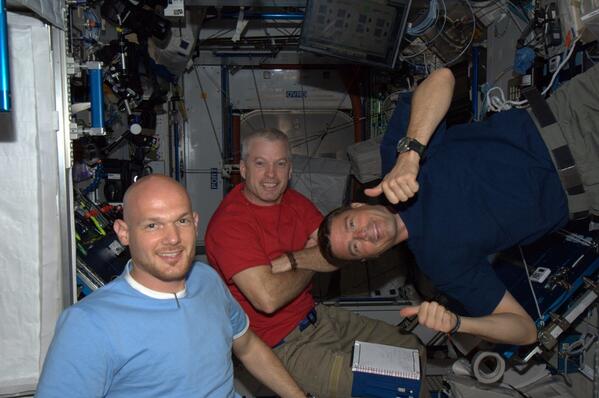
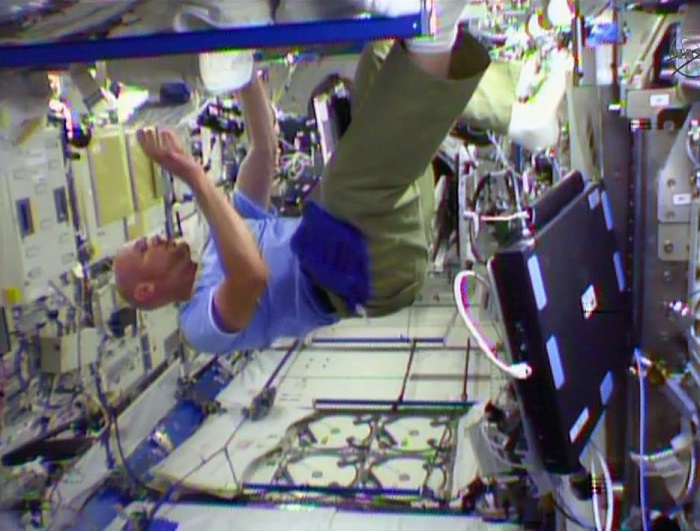
Gerst and Wiseman tagged up later with Swanson to learn more about the systems and payloads in the U.S. segment of the station.
Suraev spent much of his day unpacking cargo from his Soyuz docked to the Rassvet Mini-Research Module-1. He also participated in the Virtual study, which looks at changes to a cosmonaut’s spatial orientation during a long-duration space mission.
Suraev, Gerst and Wiseman each also had an hour set aside on their own to familiarize themselves with the orbiting complex, which is larger than a six-bedroom house.
Skvortsov spent much of his day packing trash and other unneeded items into the ISS Progress 53 cargo craft for disposal when it undocks June 9. The Progress, which delivered 2.9 tons of food, fuel and supplies to the station on Nov. 9, will undock from the aft port of the Zvezda service module and be de-orbited for a destructive re-entry in the Earth’s atmosphere over the Pacific Ocean.
Artemyev upgraded software for the Napor-mini RSA experiment, which uses an optical telescope and a small radar system for monitoring Earth’s environment.
In the afternoon, Artemyev checked the ventilation in the Russian segment of the station and downloaded micro-accelerometer data from the Identification experiment to provide insight into the station’s dynamic loads.
Over the weekend, the station’s residents will have some free time to relax, speak with family members back on Earth and take care of weekly housekeeping chores. The six astronauts and cosmonauts also will continue their daily two-hour exercise regimen to prevent the loss of muscle mass and bone density that occurs during long-duration spaceflight.
Quelle: NASA
.
Update: 3.06.2014
.
New Six-Member Crew Ramps up Science, Familiarization Work
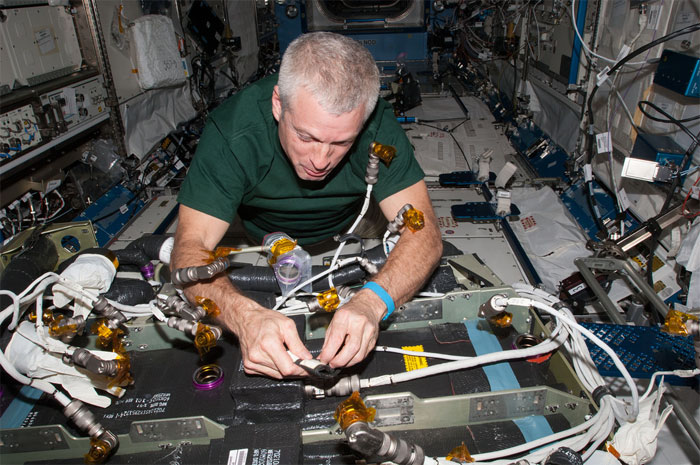
Astronaut Steve Swanson works during in-flight maintenance to mate electrical connectors in Tranquility's Carbon Dioxide Removal Assembly (CDRA).
.
Expedition 40 is beginning its first full week together as a six-member crew. The station residents were busy Monday with science work, an emergency review and crew orientation activities.
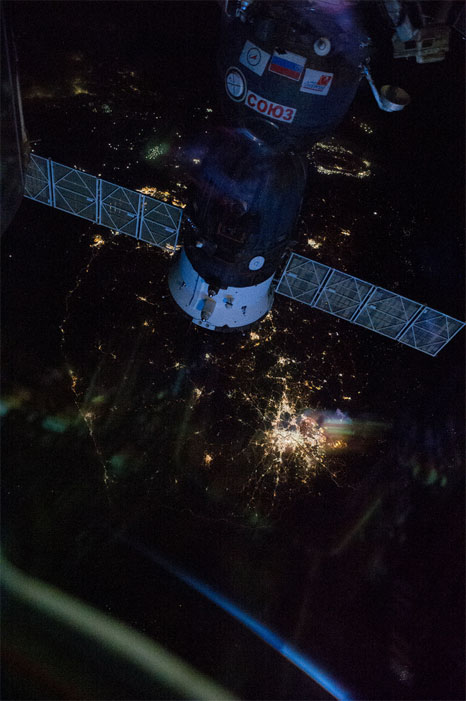
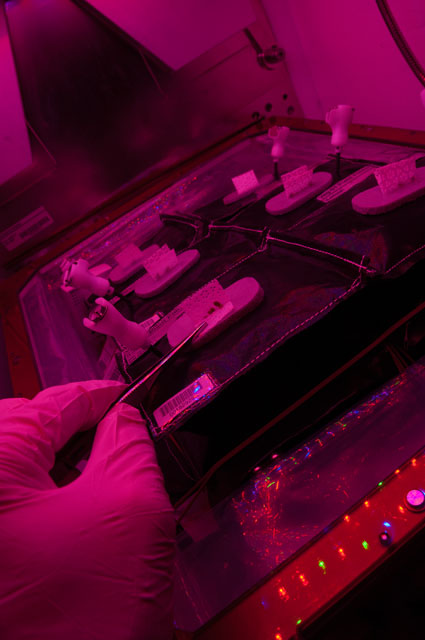
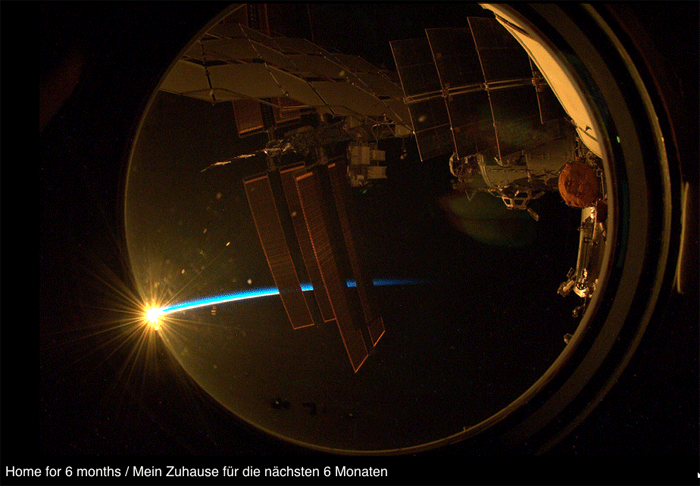
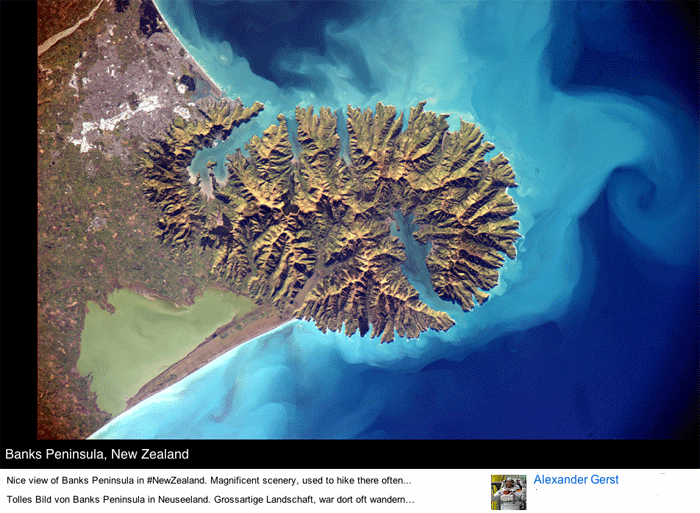
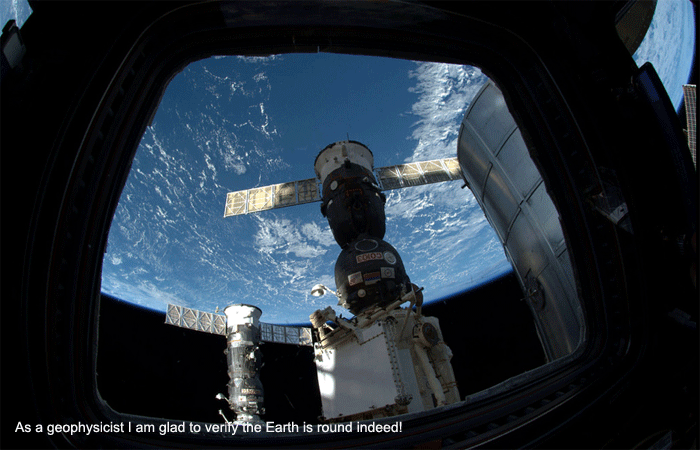
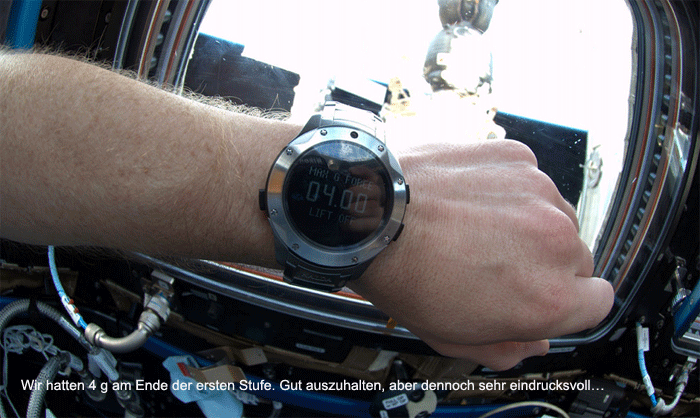
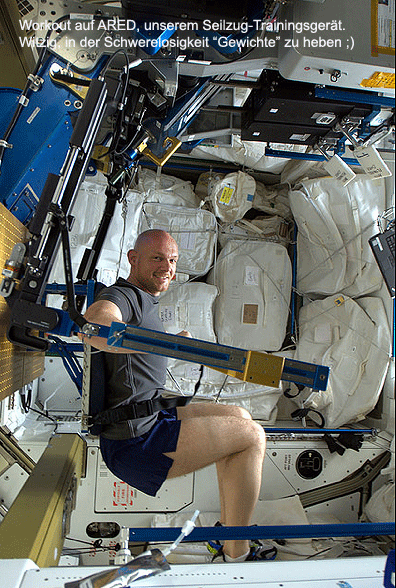
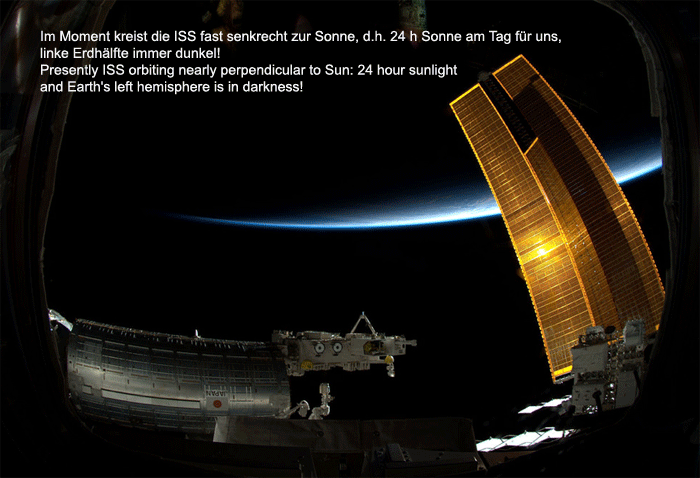
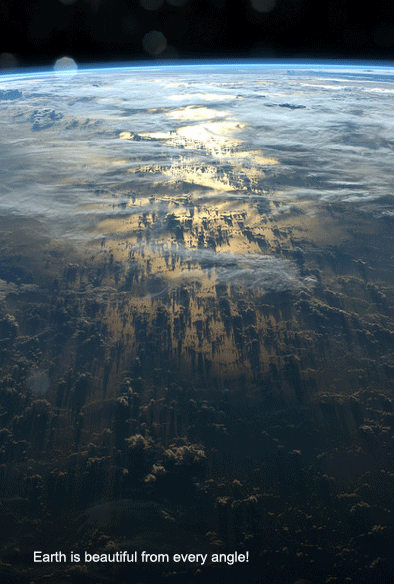
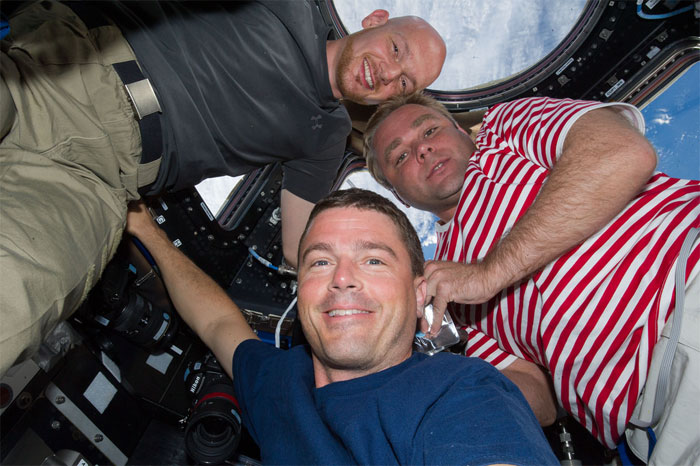
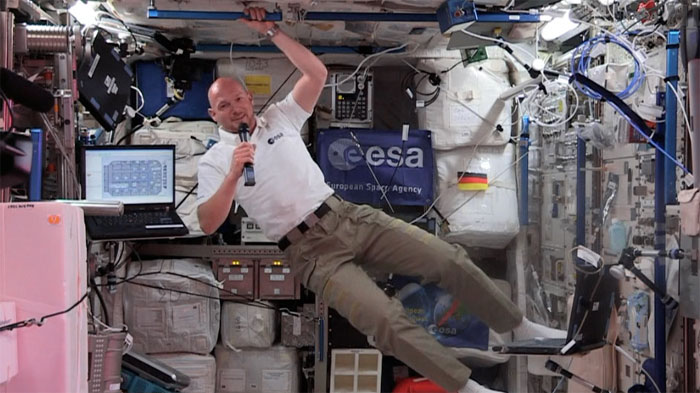
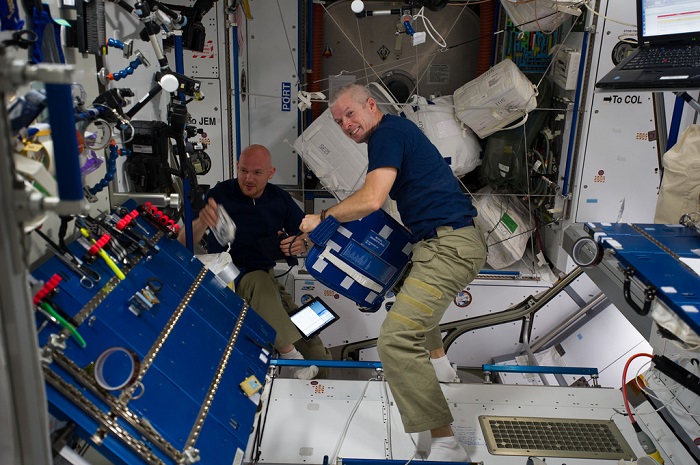
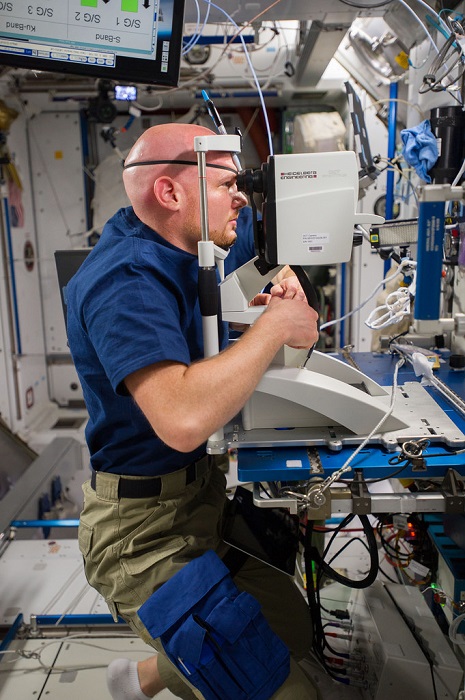
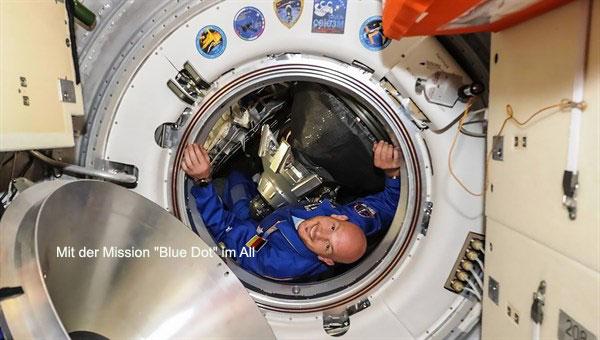
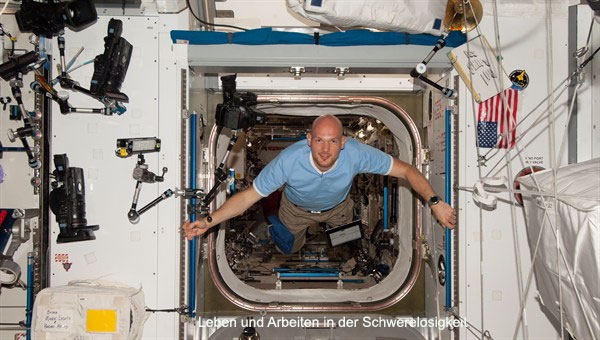
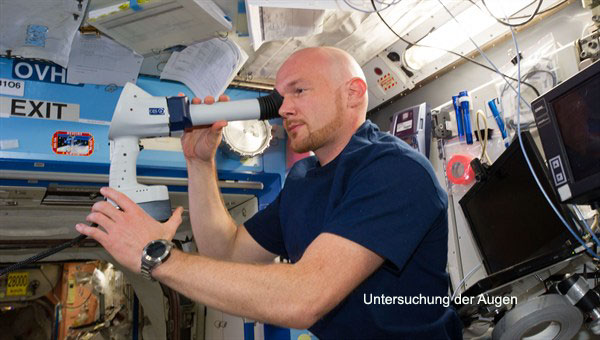
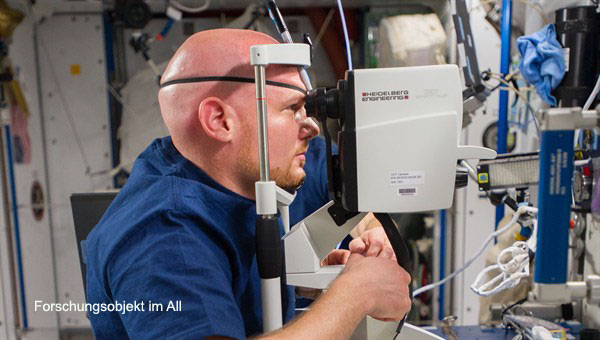
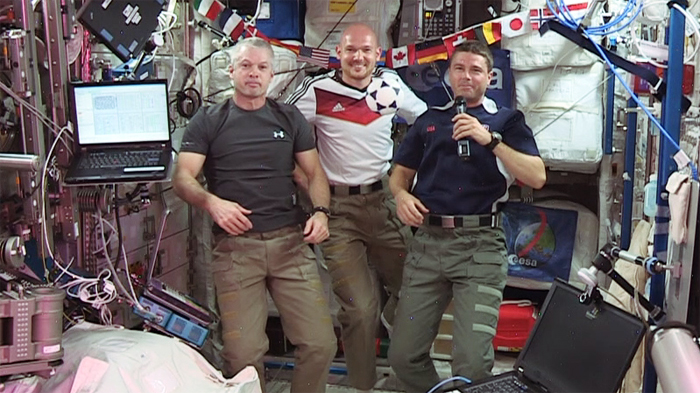
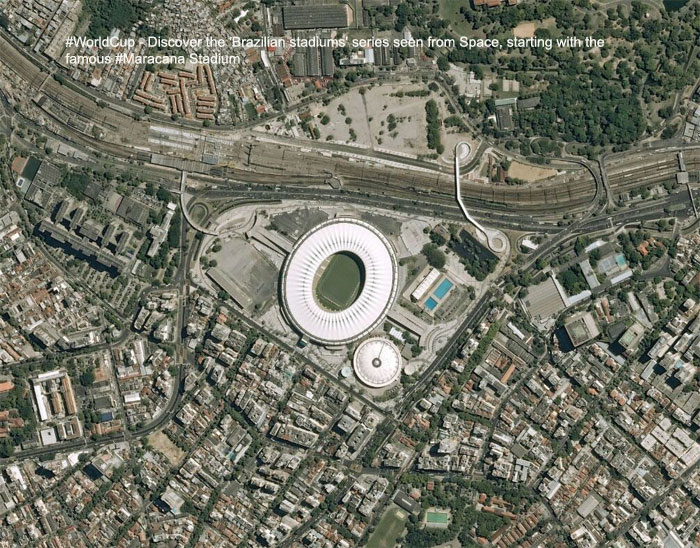
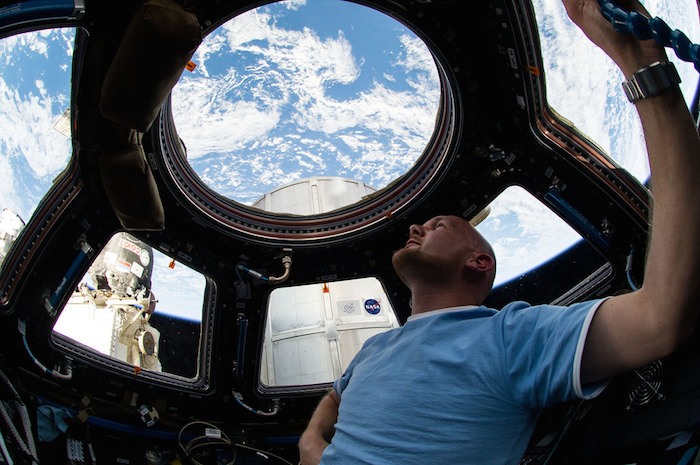
Following the crew’s normal 2 a.m. EDT reveille, Commander Steve Swanson and Flight Engineers Reid Wiseman and Alexander Gerst participated in a variety of experiments aimed at understanding the effects of long-duration spaceflight on the human body and developing countermeasures to mitigate the health risks. This research is vitally important as NASA works toward sending humans on longer voyages beyond low Earth orbit.
Swanson began his day with the Sprint investigation, which measures the effectiveness of high-intensity, low-volume exercise training in minimizing the loss of muscle mass and bone density that occurs during spaceflight. Station crew members currently work out around 2 ½-hours every day, and the researchers behind Sprint aim to reduce that total exercise time while maintaining crew fitness.
Wiseman meanwhile served as the subject for a session of the Cardio Ox study, which is investigating the risks of cardiovascular disease related to long-duration spaceflight. With guidance from the ground team, Gerst performed an ultrasound scan on Wiseman and measured his blood pressure. Results from this experiment will help researchers determine if biological markers of oxidative and inflammatory stress are elevated during and after spaceflight, and how those markers correlate with the long-term health changes in astronauts.
Wiseman also logged his meals and followed a prescribed diet for the Pro K study as nutritionists monitor how dietary changes may affect spaceflight-related bone loss.
For the Circadian Rhythms investigation, Gerst donned sensors and an armband monitor to track his body’s core temperature over a 36-hour period. Since the station orbits the Earth 16 times a day, an astronaut’s body clock can get disrupted from experiencing a sunrise or sunset every 45 minutes. Results from this investigation will provide insights into the adaptations of the human autonomic nervous system in space and will help optimize crew schedules and workplace illumination.
Gerst also set up samples and configured hardware for a combustion experiment known as the Burning and Suppression of Solids, or BASS. In the absence of gravity, materials burn quite differently, and some materials may actually become more flammable than on Earth. BASS takes a look at how a variety of materials burn and extinguish in microgravity, which will lead to improvements in spacecraft materials selection and strategies for putting out accidental fires aboard spacecraft. The research also provides scientists with improved computational models that will aid in the design of fire detection and suppression systems here on Earth.
Working in the station’s Kibo laboratory, Swanson swapped out a seedling test sample chamber inside the Cell Biology Experiment Facility, which includes a centrifuge for controlled gravity levels. The Resist Tubule experiment examines the mechanisms for gravity resistance in plants to help researchers learn more about the evolution of plants and enable efficient plant production both on Earth and in space.
After a break for lunch, Swanson and Wiseman worked together in the station’s Tranquility node to remove and replace a failed heat exchanger for the Common Cabin Air Assembly, a component of the station’s Environmental Control and Life Support System which collects condensate out of the air.
In the Quest airlock, Gerst wrapped up verification work on the new spacesuit delivered to the station by the SpaceX-3 commercial resupply services mission in April. Gerst performed a water dump and fill of the spacesuit to satisfy maintenance requirements for on-orbit stowage. Since this is the first U.S. spacesuit that has traveled to the station on anything other than a space shuttle, Gerst has been conducting an extra-thorough checkout of the suit to certify it for readiness.
With their own spacewalk looming next week, Flight Engineers Alexander Skvortsov and Oleg Artemyev attached spacewalk tools and other hardware to their Russian Orlan spacesuits, including gear on loan from their NASA crewmates.
During the 6 ½-hour excursion slated to begin at 9:50 a.m. Thursday, the two spacewalking cosmonauts will mount a new integrated command and telemetry system on the Zvezda service module and replace a payload rack on the Russian segment with a payload boom previously installed in a temporary location. NASA Television coverage of the Russian spacewalk begins at 9:15 a.m. Thursday.
The spacewalk will be the 180th in support of space station assembly and maintenance and the first for both Skvortsov and Artemyev.
The third Russian cosmonaut aboard the station, Flight Engineer Max Suraev, worked with Skvortsov to install a docking mechanism for the ISS Progress 55 cargo craft connected to the Pirs docking compartment. Suraev also conducted an audit of the docking and internal transfer system tools and equipment aboard the station.
Over the weekend, the station’s residents will have some free time to relax, speak with family members back on Earth and take care of weekly housekeeping chores. They’ll also have a chance to catch up on the action at the World Cup 2014 games in Brazil. The crew sent down a special message earlier to wish good luck to all the players and teams.
Quelle: NASA
.
Update: 18.06.2014
.
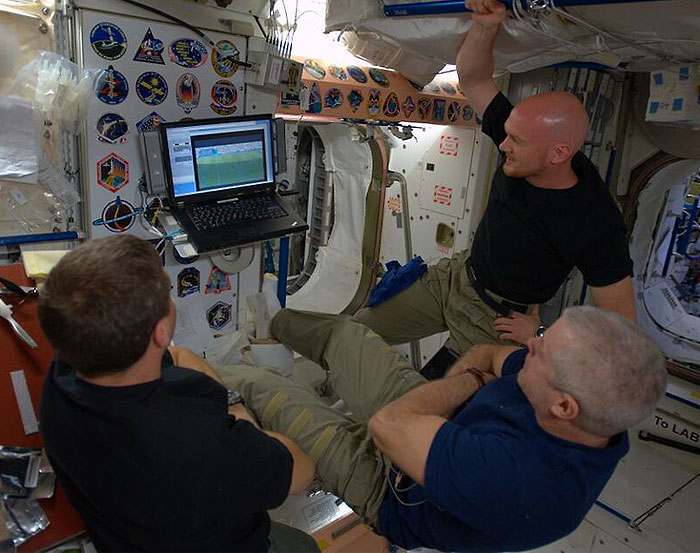
.
Update: 20.06.2014
.
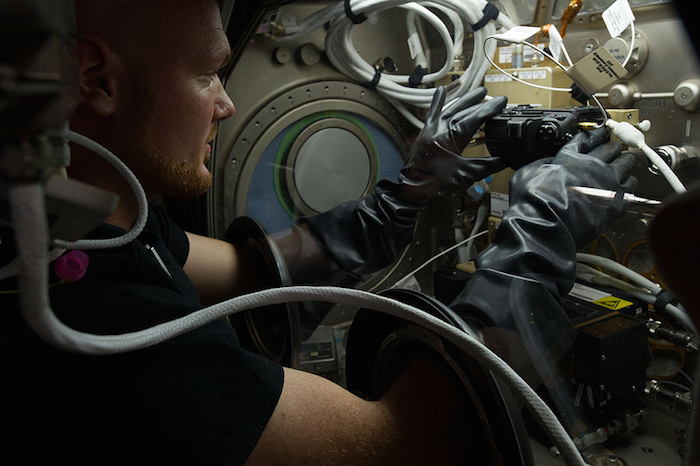
European Space Agency astronaut Alexander Gerst conducts two flame tests for a combustion experiment known as the Burning and Suppression of Solids (BASS) in the Microgravity Science Glovebox on the International Space Station.
.
